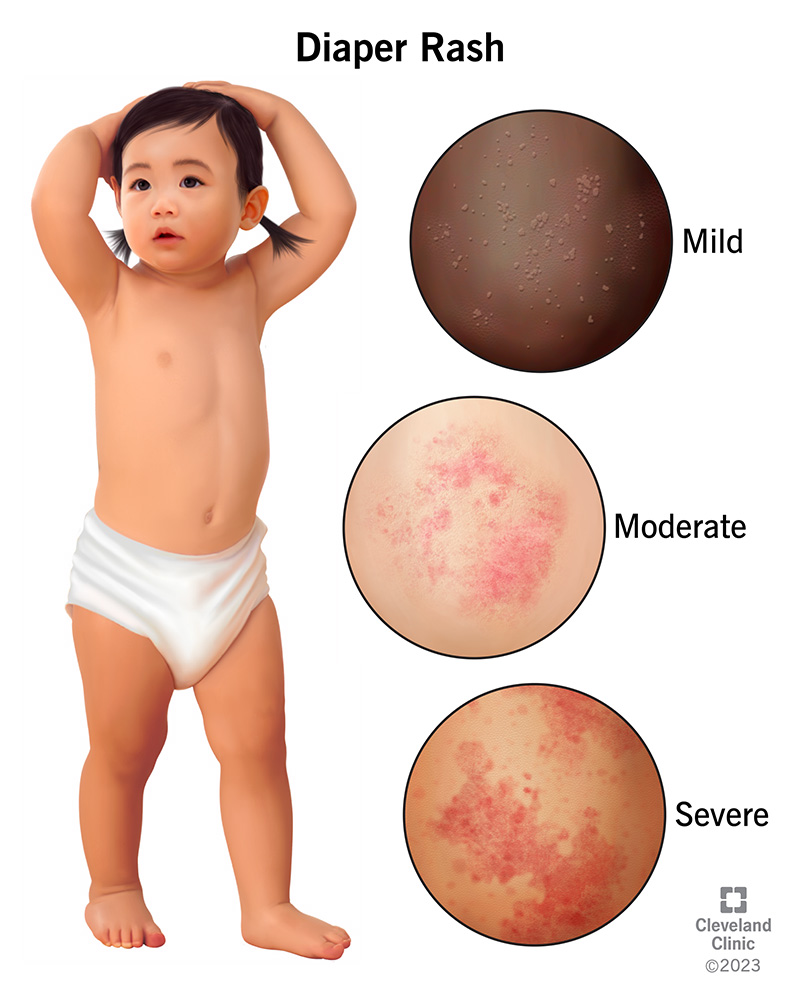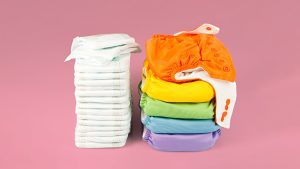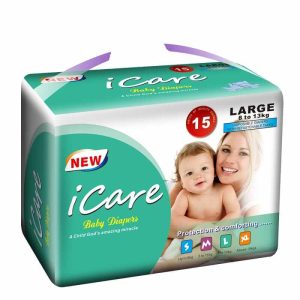Babies typically get diaper rash between 9 to 12 months old. Irritation often occurs due to prolonged exposure to moisture.
Diaper rash is a common issue for infants. It causes redness, irritation, and discomfort in the diaper area. Moisture, friction, and prolonged contact with urine or feces contribute to its development. Parents often notice this rash during the early months when babies have frequent diaper changes.
Proper hygiene and timely diaper changes help prevent and manage diaper rash. Using barrier creams and allowing the skin to breathe can also alleviate symptoms. Knowing the causes and treatments of diaper rash ensures a happier, healthier baby. Always consult a pediatrician if the rash persists or worsens.
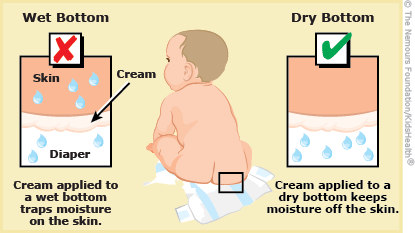
Credit: kidshealth.org
Causes Of Diaper Rash
Diaper rash is a common issue for many babies. It can cause discomfort and worry for parents. Understanding the causes helps in preventing and treating it effectively.
Common Triggers
Diaper rash can be caused by various common triggers. Here are some of the frequent culprits:
- Wet Diapers: Prolonged contact with urine or stool.
- Friction: Diapers rubbing against the baby’s skin.
- Irritating Substances: Certain baby wipes or soaps.
- New Foods: Changes in diet can affect stool and urine.
Underlying Conditions
Sometimes, underlying conditions can lead to diaper rash. These include:
| Condition | Description |
|---|---|
| Yeast Infections | Fungal infections thriving in moist environments. |
| Bacterial Infections | Infections caused by bacteria like Staphylococcus. |
| Allergic Reactions | Reactions to new products or detergents. |
| Eczema | Skin condition making the skin more susceptible to rash. |
Recognizing Diaper Rash
Diaper rash is a common issue for babies. It can cause discomfort and worry for parents. Recognizing diaper rash early helps in managing it effectively. Below we discuss the early symptoms and severe signs of diaper rash.
Early Symptoms
- Redness: The skin around the diaper area turns red.
- Inflammation: The skin may become swollen and warm to touch.
- Small Bumps: Tiny red bumps can appear on the skin.
- Discomfort: Your baby might be more fussy or irritable.
Severe Signs
If the diaper rash worsens, you might notice more severe symptoms:
- Blisters: The rash develops blisters or sores.
- Pus-filled Bumps: These bumps might ooze or crust over.
- Fever: Your baby could develop a fever.
- Spreading Rash: The rash spreads beyond the diaper area.
- Behavior Changes: Baby may cry more during diaper changes.
| Symptoms | Description |
|---|---|
| Redness | Skin turns red around diaper area. |
| Inflammation | Swollen and warm skin. |
| Small Bumps | Tiny red bumps on the skin. |
| Discomfort | Baby becomes more irritable. |
Age And Diaper Rash
Understanding when babies get diaper rash can help in prevention and treatment. Age plays a significant role in the frequency and severity of diaper rash. Learn about the different age groups and their susceptibility to diaper rash.
Newborns
Newborns have delicate skin, making them prone to diaper rash. Their skin is thinner and more sensitive. They also urinate and defecate frequently, increasing moisture. Moisture creates a perfect environment for diaper rash.
Newborns often have more acidic stool. This can irritate their skin. Frequent diaper changes are crucial. Clean and dry the baby’s bottom after each change. Use a barrier cream to protect the skin. Avoid using harsh wipes; opt for water and a soft cloth.
Older Infants
Older infants are less prone to diaper rash. Their skin becomes tougher. They also urinate and defecate less frequently. This reduces moisture and irritation. But they can still get diaper rash.
Teething can cause diaper rash in older infants. Teething increases saliva production. This can lead to more acidic stools. Introducing solid foods can also change stool consistency. New foods can cause irritation. Monitoring your baby’s diet can help. Identify and avoid trigger foods.
Older infants may start moving more. Increased mobility can cause friction. Friction can lead to diaper rash. Use well-fitting diapers to reduce friction. Regular diaper changes are still important.
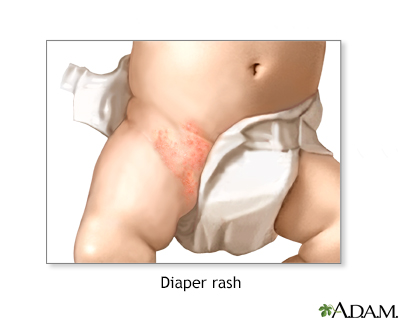
Credit: www.mountsinai.org
Prevention Strategies
Diaper rash can cause discomfort for your baby. Preventing it is easier than treating it. By following some simple strategies, you can keep your baby’s skin healthy.
Hygiene Practices
Maintaining proper hygiene can help avoid diaper rash.
- Frequent diaper changes: Change diapers as soon as they are wet or soiled.
- Gentle cleaning: Use a soft cloth or baby wipes. Avoid harsh chemicals.
- Drying the skin: Pat the area dry with a soft towel. Do not rub.
- Air time: Let your baby go diaper-free for a while each day.
Diaper Choices
The type of diaper you use can affect your baby’s skin.
| Type of Diaper | Benefits |
|---|---|
| Disposable Diapers | Absorb moisture quickly, keeping the skin dry. |
| Cloth Diapers | Made from natural materials, gentle on the skin. |
Choose a diaper that suits your baby’s needs. Ensure the diaper fits well and is not too tight.
Using these prevention strategies can help keep your baby happy and rash-free. A healthy baby is a happy baby.
Soothing Diaper Rash
Diaper rash can cause discomfort to your baby. Knowing how to soothe it is essential. From home remedies to over-the-counter treatments, several options can help.
Home Remedies
- Keep the Area Clean and Dry: Change diapers frequently to keep the area dry.
- Use Warm Water: Rinse the diaper area with warm water during each change.
- Air Time: Let your baby go without a diaper for a little while.
- Coconut Oil: Apply coconut oil to the rash. It has soothing properties.
- Baking Soda Baths: Add baking soda to your baby’s bath to help neutralize acids.
Over-the-counter Treatments
Sometimes, home remedies may not be enough. In such cases, over-the-counter treatments can be effective.
- Diaper Rash Creams: Zinc oxide-based creams create a barrier on the skin.
- Anti-fungal Creams: Use these if the rash is caused by a yeast infection.
- Hydrocortisone Cream: Apply a small amount to reduce inflammation.
Always consult your pediatrician before using any new treatment. Your baby’s comfort is the priority.
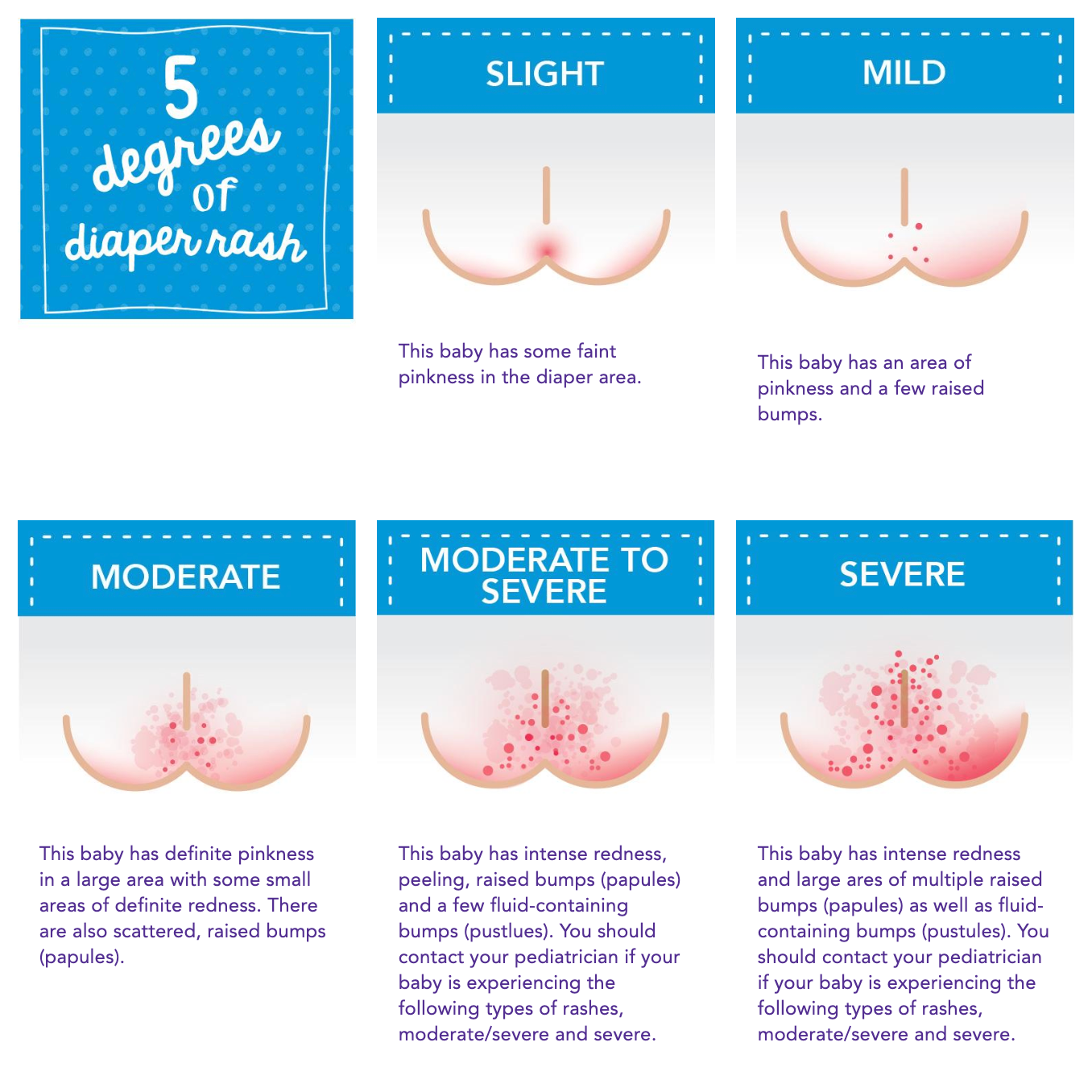
Credit: www.eliandalibaby.com
When To Seek Medical Help
Diaper rash is common in babies, but sometimes, medical help is needed. Knowing when to seek a doctor’s advice can save your baby from discomfort and pain. Below are some key signs and symptoms that indicate it may be time to consult a healthcare professional.
Persistent Rash
If your baby’s diaper rash lasts more than a few days, it might need medical attention. Rashes that don’t improve with typical treatments could signify a more serious issue. Babies’ skin is sensitive, and prolonged rashes can lead to further complications.
Try to keep the diaper area clean and dry. Change diapers frequently to prevent moisture buildup. Use mild, fragrance-free products to avoid irritating the skin. If the rash doesn’t get better, contact a healthcare provider.
Signs Of Infection
Recognizing the signs of infection is crucial for your baby’s health. Common symptoms include:
- Redness and swelling in the diaper area
- Pus-filled blisters or sores
- Fever or unusual fussiness in your baby
If you notice these symptoms, it’s important to seek medical help immediately. Infections can spread quickly and cause more severe health issues. Timely medical intervention can prevent complications and ensure your baby stays healthy.
Impact Of Diet
Diet plays a crucial role in a baby’s overall health. It can also affect the likelihood of developing diaper rash. The foods a baby consumes can influence their skin’s condition. Let’s explore how diet impacts diaper rash.
Breastfeeding
Breastfeeding can help reduce diaper rash. Breast milk contains antibodies that protect the baby. These antibodies fight infections, which can prevent rashes. Babies who are exclusively breastfed often have fewer diaper rashes. Their stool is usually less acidic, causing less irritation to the skin.
Breastfeeding moms should also watch their diet. Certain foods in a mom’s diet can pass through breast milk. Spicy foods, dairy, and caffeine can sometimes irritate the baby’s skin. Keeping a balanced diet can help maintain healthy skin for the baby.
Introduction To Solids
Starting solid foods can change a baby’s stool. This new change can increase the risk of diaper rash. Foods like citrus fruits, tomatoes, and high-acid foods can cause irritation. Introducing new foods one at a time can help identify any triggers.
Keep a food diary when introducing solids. Note any changes in your baby’s skin. This can help identify which foods may be causing irritation. Always ensure the baby stays hydrated. Proper hydration can help maintain healthy skin and reduce the risk of diaper rash.
| Food Type | Effect on Diaper Rash |
|---|---|
| Citrus Fruits | Can increase acidity, leading to rashes |
| Tomatoes | May cause irritation |
| Dairy | Possible skin irritant |
| Hydration | Helps maintain healthy skin |
Choosing The Right Products
Choosing the right products can help prevent and treat diaper rash. Babies have delicate skin that needs special care. Using the wrong products can irritate their skin.
Diaper Creams
Diaper creams protect your baby’s skin from moisture. They create a barrier between the skin and the diaper. Common ingredients in diaper creams include zinc oxide and petroleum jelly.
Here are some tips to choose the best diaper cream:
- Check the ingredients: Look for creams with natural ingredients.
- Fragrance-free: Choose creams without added perfumes.
- Hypoallergenic: Ensure the product is safe for sensitive skin.
Sensitive Skin Options
Babies with sensitive skin need extra care. Using gentle products can help avoid irritation.
Consider these options for sensitive skin:
| Product Type | Features |
|---|---|
| Diapers | Soft, breathable, and chemical-free |
| Wipes | Alcohol-free, fragrance-free, and water-based |
| Lotions | Gentle, hypoallergenic, and free from dyes |
Using these products can reduce the risk of diaper rash. Always test a small amount on your baby’s skin first.
Frequently Asked Questions
What Causes Diaper Rash In Babies?
Diaper rash in babies is often caused by prolonged exposure to wet or dirty diapers. Friction from tight diapers can also cause irritation. Sometimes, a change in diet or a yeast infection can be the culprit. Keeping the diaper area clean and dry helps prevent diaper rash.
How Can I Prevent Diaper Rash?
To prevent diaper rash, change diapers frequently to keep the area dry. Use a gentle, hypoallergenic diaper cream to protect the skin. Avoid tight-fitting diapers and give your baby some diaper-free time. Clean the diaper area with water and mild soap.
When Should I See A Doctor For Diaper Rash?
See a doctor if the diaper rash is severe or persists for more than a few days. Also, consult a doctor if the rash spreads beyond the diaper area or causes your baby significant discomfort. Signs of infection, like fever or pus, require medical attention.
Can Certain Foods Cause Diaper Rash?
Yes, introducing new foods can sometimes cause diaper rash. Acidic foods like citrus fruits and tomatoes can irritate a baby’s skin. Monitor your baby’s reaction to new foods and consult a pediatrician for advice. Keep a food diary to identify potential triggers.
Conclusion
Diaper rash is a common issue for babies. It can be prevented with proper care and hygiene. Always keep your baby’s skin clean and dry. Use gentle products and let their skin breathe. If the rash persists, consult a pediatrician.
Your baby’s comfort and health are paramount.

